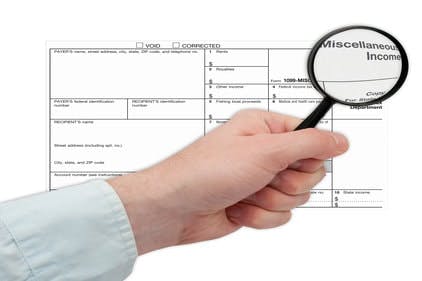How the IRS Detects Employee Misclassification
Employee misclassification occurs when an employer claims an employee is an independent contractor, thus removing the need to pay withholding taxes. The IRS has programs in place to detect this.

No one wants to admit it, but employers purposely misclassify employees to avoid paying federal withholding tax. While those businesses may think they are getting away with it, the Internal Revenue Service (IRS) is revving up its efforts to enforce its penalties surrounding misclassification.
1099 Matching Program
The IRS created this program to target individuals who only file one Form 1099-MISC as a personal tax return. Typically, true independent contractors will require more. Another component of the 1099 Matching Program is monitoring who submits multiple types of tax returns. When a worker files Form W-2 and Form 1099-MISC from the same employer in the same year, suspicions are raised. This situation would only happen if a business brings a retired employee back as an independent contractor, or if a company keeps working with a previous employee after their employment has been terminated, but in a contract position. A worker can lawfully be an employee and independent contractor simultaneously. However, this is rare, and the IRS closely examines facts surrounding these anomalies.
Employment Tax National Research Program
In February 2010, the IRS launched this program as an intensified auditing curriculum that compiles statistical data. The IRS conducts 6,000 random employment tax audits, focusing on records pertaining to employment tax issues - including worker classification. The results of these audits help the IRS gain knowledge on compliance, and predict what companies are more likely to commit worker misclassification. It also helps create a baseline for penalties.
Questionable Employment Tax Practice Initiative
In 2007, 29 state unemployment agencies signed an agreement with the IRS to share the results of employment tax examinations to increase employer compliance with both federal and state laws. This agreement was the result of the first Questionable Employment Tax Practice (QETP) initiative. State agencies and the IRS agreement:
-The IRS and state agencies will exchange tax information for civil cases.
-The IRS and state agencies may exchange information using tax reports with federal
and state information that the QETP team has created.
-The IRS and state agencies can independently share conducted examination results or work side by side in examinations.
-The IRS and state agencies will aim for consistency in classifying employees as employees and independent contractors as independent contractors.
-The IRS and states will share training opportunities and outreach opportunities with the business community when applicable.
